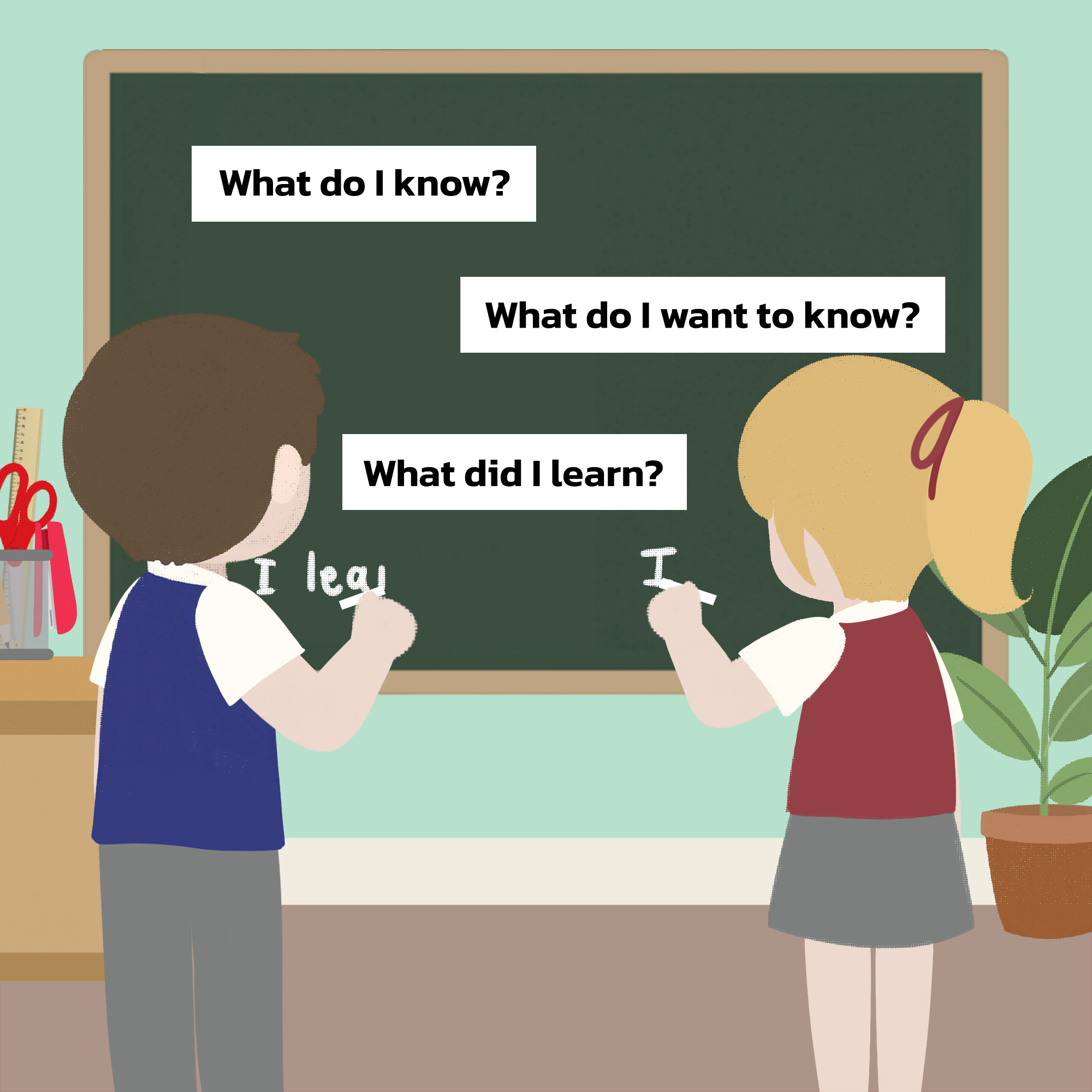An article by Richard James Rogers (Award-winning author of The Quick Guide to Classroom Management). Illustrated by Pop Sutthiya Lertyongphati.
In the ever-evolving landscape of education, it is crucial for teachers to empower their students with not just knowledge, but also the tools to become self-regulated learners. Metacognitive strategies provide a powerful framework to cultivate students’ ability to think about their thinking, leading to enhanced learning outcomes. By explicitly teaching metacognitive skills, educators can help students become more aware of their learning processes, develop effective problem-solving approaches, and ultimately become lifelong learners. What follows next are ten practical ways to incorporate metacognitive strategies into your lessons and promote student growth.
#1: Set Clear Learning Goals
Begin each lesson by explicitly stating the learning objectives. Encourage students to reflect on what they already know about the topic and identify what they hope to achieve. This metacognitive approach helps students understand the purpose of their learning and fosters a sense of ownership over their educational journey. One creative way that I advise you do this is by using the Three As technique.
#2: Think Aloud
Model the thinking process by verbalizing your thoughts as you solve problems or analyze information. Demonstrate how to monitor comprehension, clarify doubts, and adjust strategies when faced with challenges. This modeling helps students develop metacognitive skills by providing them with concrete examples of how to approach different tasks. Use my blog post on the Metacognition Cycle if you’re looking for ideas on how to verbalise your thoughts correctly.
#3: Reflect on Learning
Introduce reflective practices, such as journaling or class discussions, where students can express their thoughts, insights, and challenges encountered during the learning process. Regular reflection encourages metacognition by prompting students to evaluate their progress, identify areas for improvement, and consider alternative approaches. This great blog post by Martyn Kenneth describes some excellent self-reflection tools that can be used by students and teachers, so check it out!

#4: Promote Self-Questioning
Encourage students to ask themselves questions throughout the learning process. Teach them how to generate thought-provoking questions that assess their understanding, probe deeper into a topic, or anticipate potential difficulties. Self-questioning helps students activate prior knowledge and monitor their comprehension, fostering metacognitive awareness.
#5: Scaffold Metacognitive Strategies
Teach students specific metacognitive strategies, such as summarizing, predicting, visualizing, and self-monitoring. Provide step-by-step guidance initially, gradually shifting responsibility to the students. These strategies become valuable tools for students to manage their learning independently, fostering critical thinking and problem-solving skills.
#6: Use Graphic Organizers
Incorporate graphic organizers, such as concept maps, flowcharts, or KWL charts, to help students organize and visualize their thoughts. These visual aids facilitate metacognition by enabling students to connect new information to existing knowledge, identify knowledge gaps, and track their progress. A good place to start for ideas is this blog post on differentiating texts, which provides examples of some types of graphic organizers that can help students to digest large bodies of information.
#7: Encourage Peer Collaboration
Promote collaborative learning activities where students work together, discuss ideas, and provide feedback to their peers. Peer interactions create opportunities for metacognitive dialogue, allowing students to articulate their thinking processes, challenge assumptions, and gain alternative perspectives.

#8: Provide Timely Feedback
Offer constructive feedback that focuses not only on the final product but also on the thinking and problem-solving strategies employed. Help students reflect on their performance, identify strengths and weaknesses, and suggest strategies for improvement. Effective feedback promotes metacognitive development by guiding students’ self-reflection and self-adjustment.
#9: Foster Metacognitive Reading
Teach students reading strategies that enhance metacognitive awareness, such as previewing texts, making predictions, asking questions, and summarizing key ideas. Encourage them to monitor their comprehension while reading, using strategies like self-questioning or visualizing to deepen understanding. Reading can often be coupled with group or self-reflection to encourage deep learning (as opposed to surface learning). Please see my blog post about developing a passion for reading in students, here.
#10: Teach Metacognitive Transfer
Guide students in applying metacognitive strategies across various subject areas and contexts. Help them recognize the transferability of metacognitive skills and encourage their application beyond the classroom, fostering lifelong learning habits.
Conclusion
By incorporating metacognitive strategies into your teaching practice, you can equip your students with essential tools for self-regulation, critical thinking, and lifelong learning. The deliberate cultivation of metacognition empowers students to take ownership of their learning processes, fostering a sense of autonomy and self-efficacy. As they become more aware of their thinking and learning strategies, students can monitor their progress, identify areas of growth, and adapt their approaches accordingly.
Integrating metacognitive strategies into your lessons not only enhances academic performance but also nurtures valuable life skills. By encouraging students to reflect on their learning experiences, set goals, and analyze their own thinking, you are fostering metacognitive transfer—the ability to apply these skills in various contexts beyond the classroom. This transferability prepares students to navigate the challenges of higher education, careers, and personal growth.
All of this promotes deeper engagement and active learning in the classroom. Students who are metacognitively aware are more likely to approach tasks with a growth mindset, embracing challenges as opportunities for growth rather than being discouraged by setbacks. They become more resilient learners, willing to persevere through difficulties and develop strategies to overcome obstacles.
As educators, it is our responsibility to empower students with the tools they need to become self-regulated learners and successful individuals in an ever-changing world. By incorporating these ten strategies into your teaching repertoire, you are setting the stage for transformative learning experiences that will equip your students with the metacognitive abilities they need to thrive academically, professionally, and personally. Embrace the power of metacognition, and watch your students blossom into confident, self-directed learners who are prepared to tackle any challenge that comes their way!
We welcome you to join the Richard James Rogers online community! Join us on Facebook and Twitter for regular updates, giveaways of Richard’s books, special offers, upcoming events and news.




